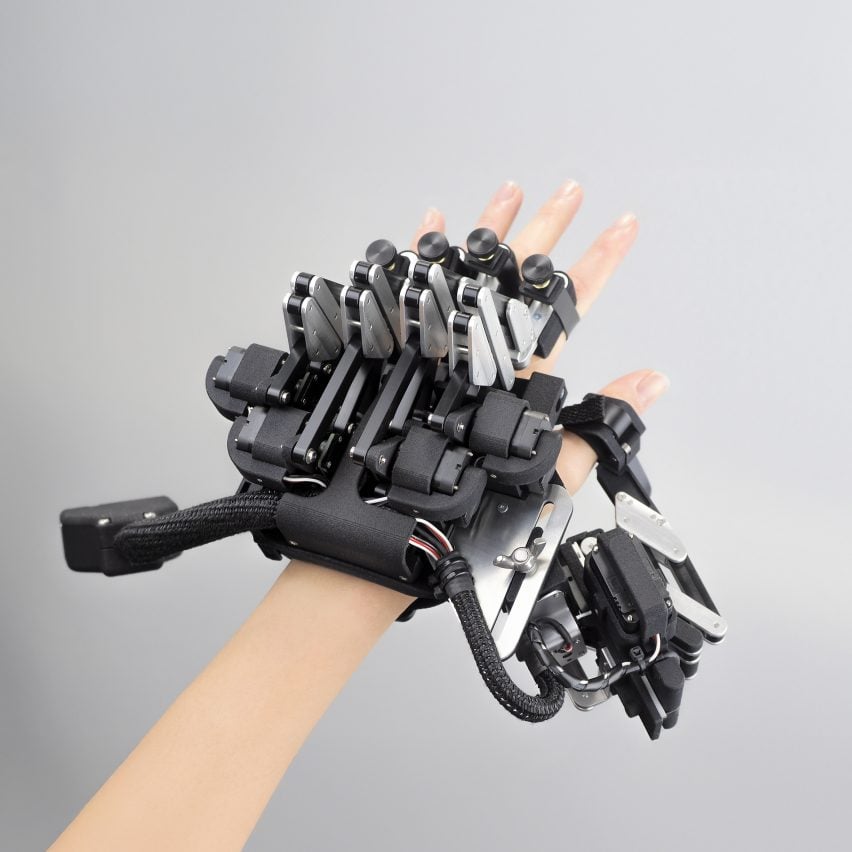Japanese researchers have used a nimble robotic hand exoskeleton to train expert pianists to improve their performance, using a technique they believe could be applied to e-sports, surgery or even handicrafts.
The robotic exoskeleton is the work of researcher Shinichi Furuya and his team at the Sony Computer Science Laboratories (Sony CSL) in Tokyo, where they focus on using technology to enhance music practice.
The exoskeleton can independently move the wearer’s fingers using a motor at the base of each digit.

Researchers found that after just one 30-minute session with the device, where the exoskeleton triggered a fast and complex movement pattern, participants in the study were able to play faster independently.
The effect was visible in both of the participants’ hands – even though they had only worn the exoskeleton on the right – and persisted both immediately after the training and the next day.
Furuya, an accomplished pianist himself, was motivated to create the device to enable musicians to push past the plateau they usually hit after extensive training, also known as the “ceiling effect”.
The ceiling effect means that no further improvement can be gained, no matter how much the musician may practice.

The person is also at risk of injury from overtraining – something the hand exoskeleton avoids because the person wearing it is not using their muscles to move.
“Technology can be a support for musicians to embody musical creativity through enhancing sensorimotor skills,” Furuya told Dezeen.
“Our vision is that in the future society, musicians can create the musical expression in their minds without suffering from physical constraints or limitations.”
Furuya says that the discovery suggests that there is leeway to extend people’s skills beyond their previous limits and that the approach could be used in training for other arts and activities.
“There are several skills that require dexterous finger movements, such as e-sports and surgery,” said Furuya. “Some craftsmanship can be candidates, too.”
Sony CSL tested the exoskeleton using 118 expert pianists who had all majored in piano performance at a musical conservatory and had been playing since before the age of eight.
Publishing their findings in the journal Science Robotics, the researchers noted that training with fast and complex movements improved the pianists’ performance but training with slow or simple movements had no effect.
Brain scans confirmed that the changes registered in the participants’ motor cortex.

The hand exoskeleton is part of an approach that Furuya calls “Musical Dynaformics”, which uses the science of music performance to create new forms of technology-enabled learning.
A similar device he trialled previously enabled wearers to mimic the movements of their teachers.
“Compared to sports, learning to play music lags far behind in qualitative contributions that involve science and technology,” said Sony CSL.
The hand exoskeleton is a rare example of this kind of device being used to improve ability in a group of people who are non-disabled. Often, exoskeletons are used in rehabilitation, for instance to help paralysed people to walk.
Recently, however, exoskeletons have become more universal, with Arc’teryx and Google spinoff Skip even incorporating one into a pair of hiking trousers that can give hikers a boost on steep terrain.
The photography by Yuki Ogasawara.
The post Finger-waggling exoskeleton helps pianists play faster appeared first on Dezeen.

